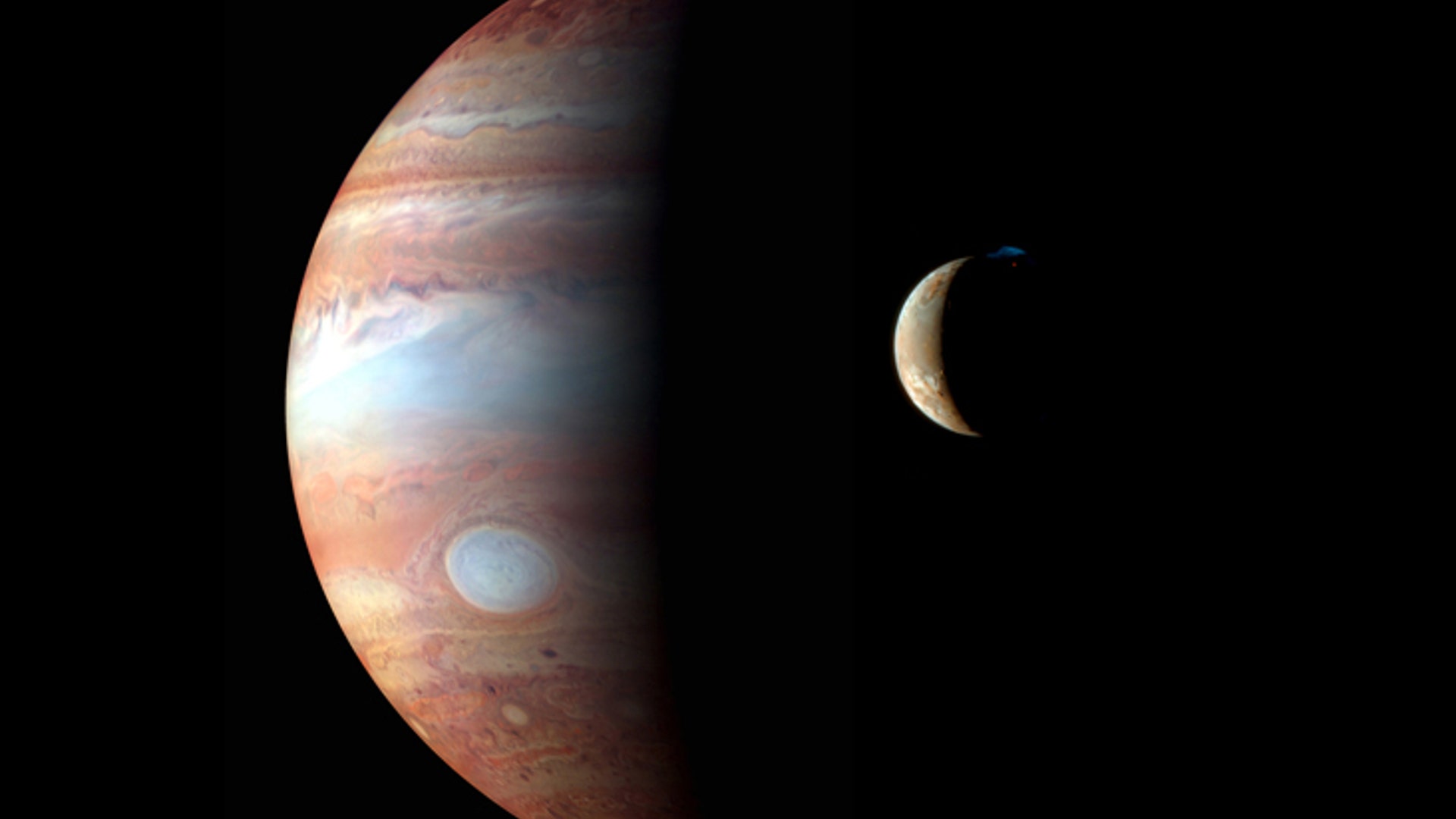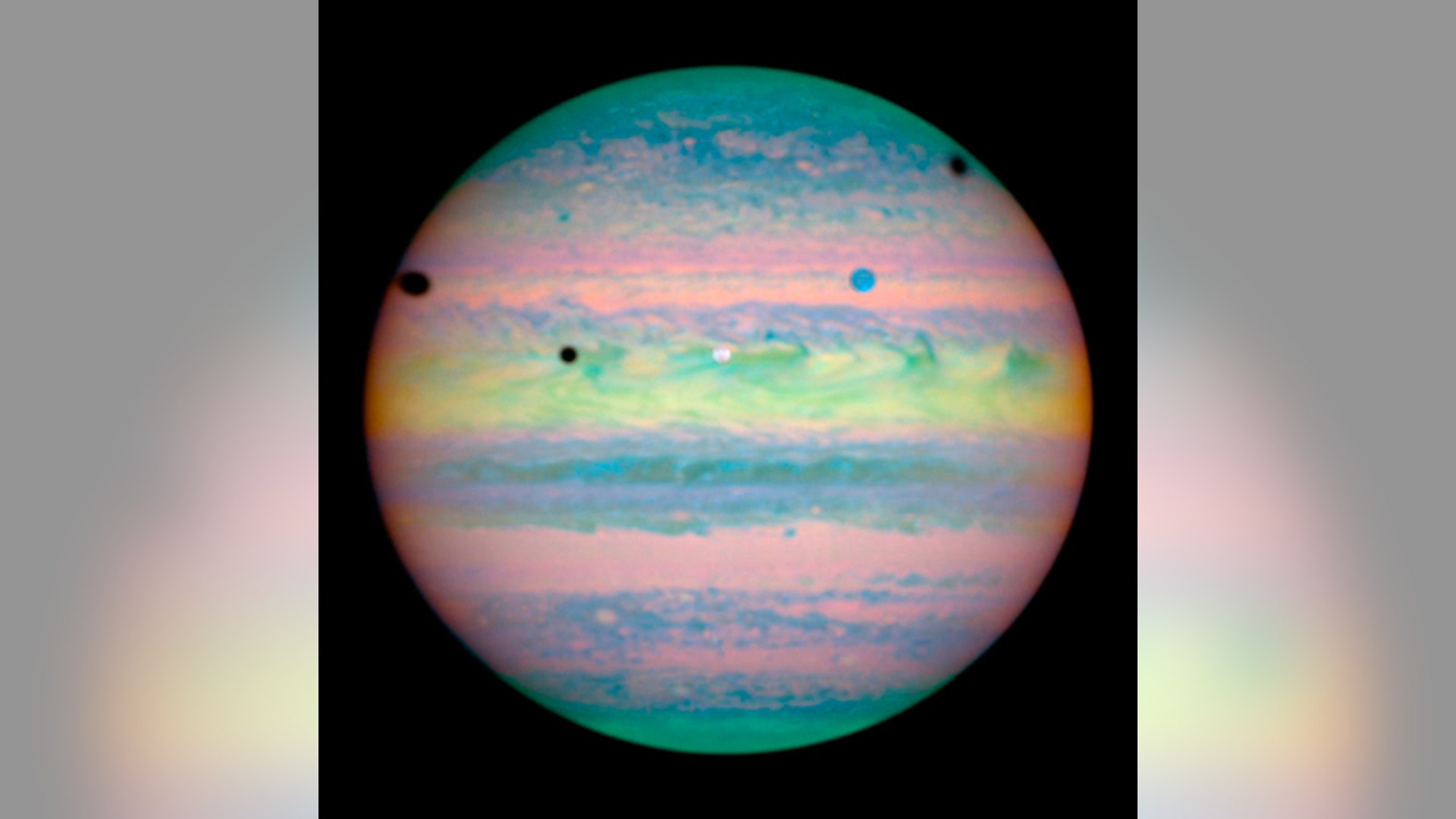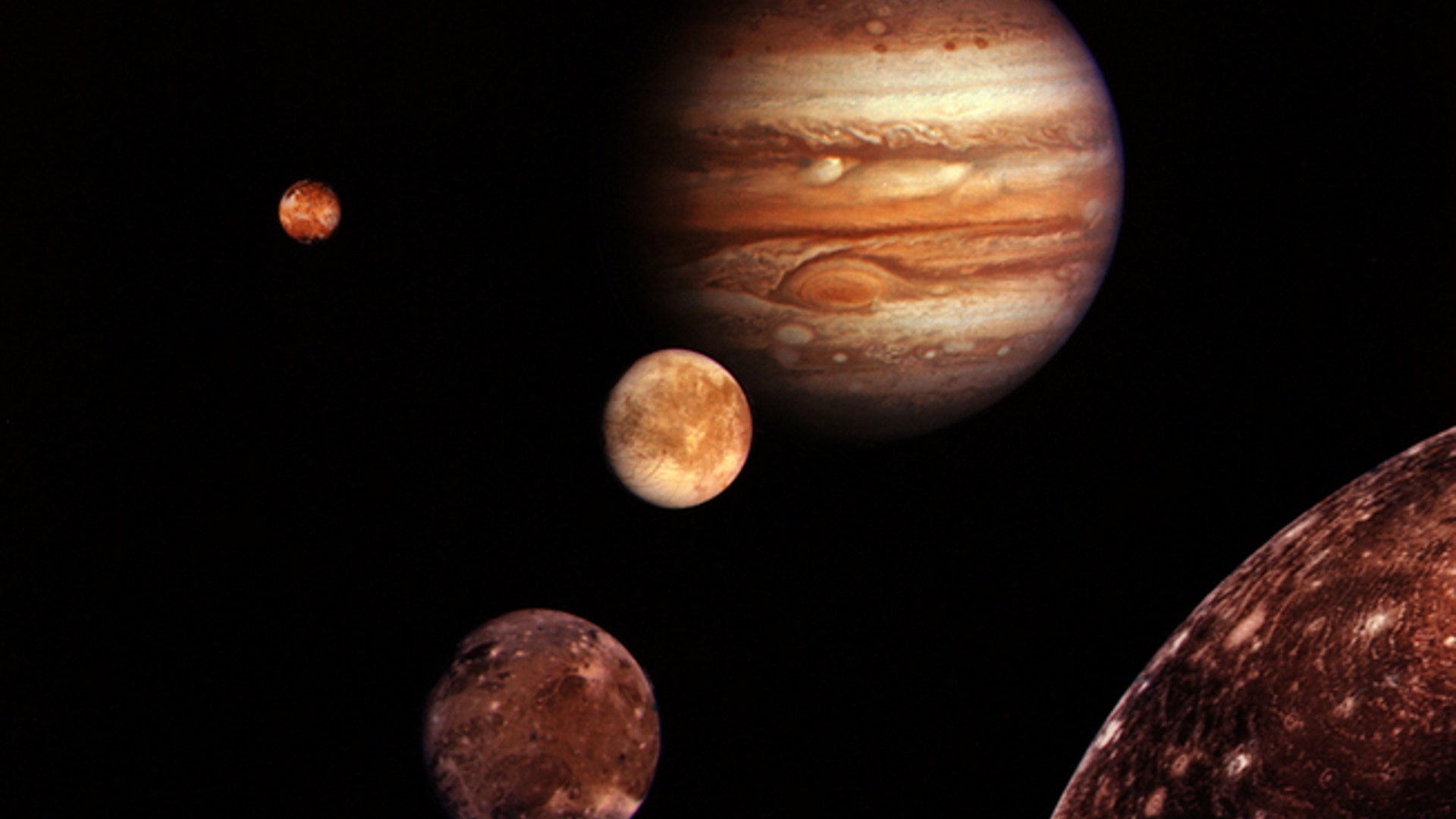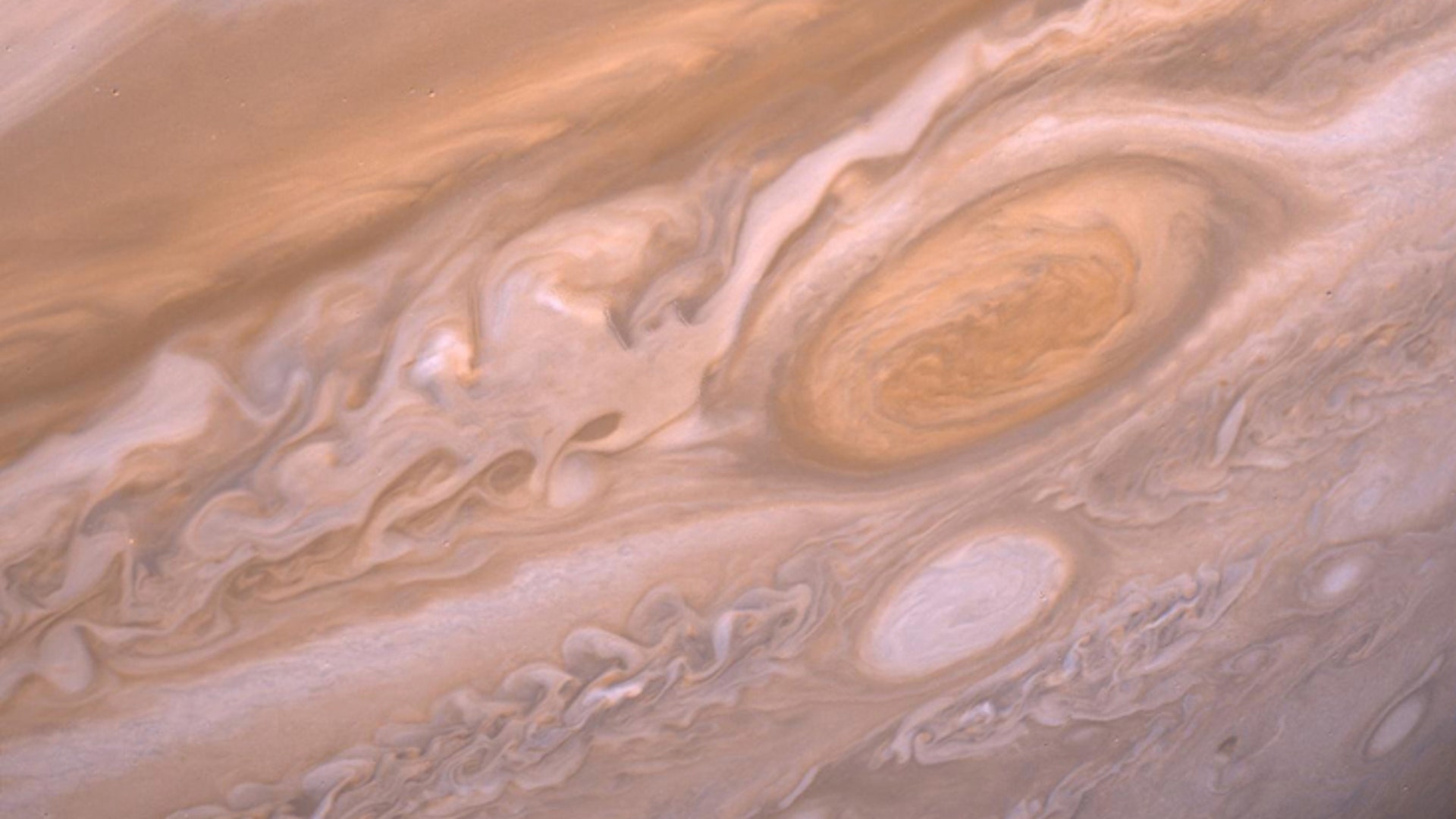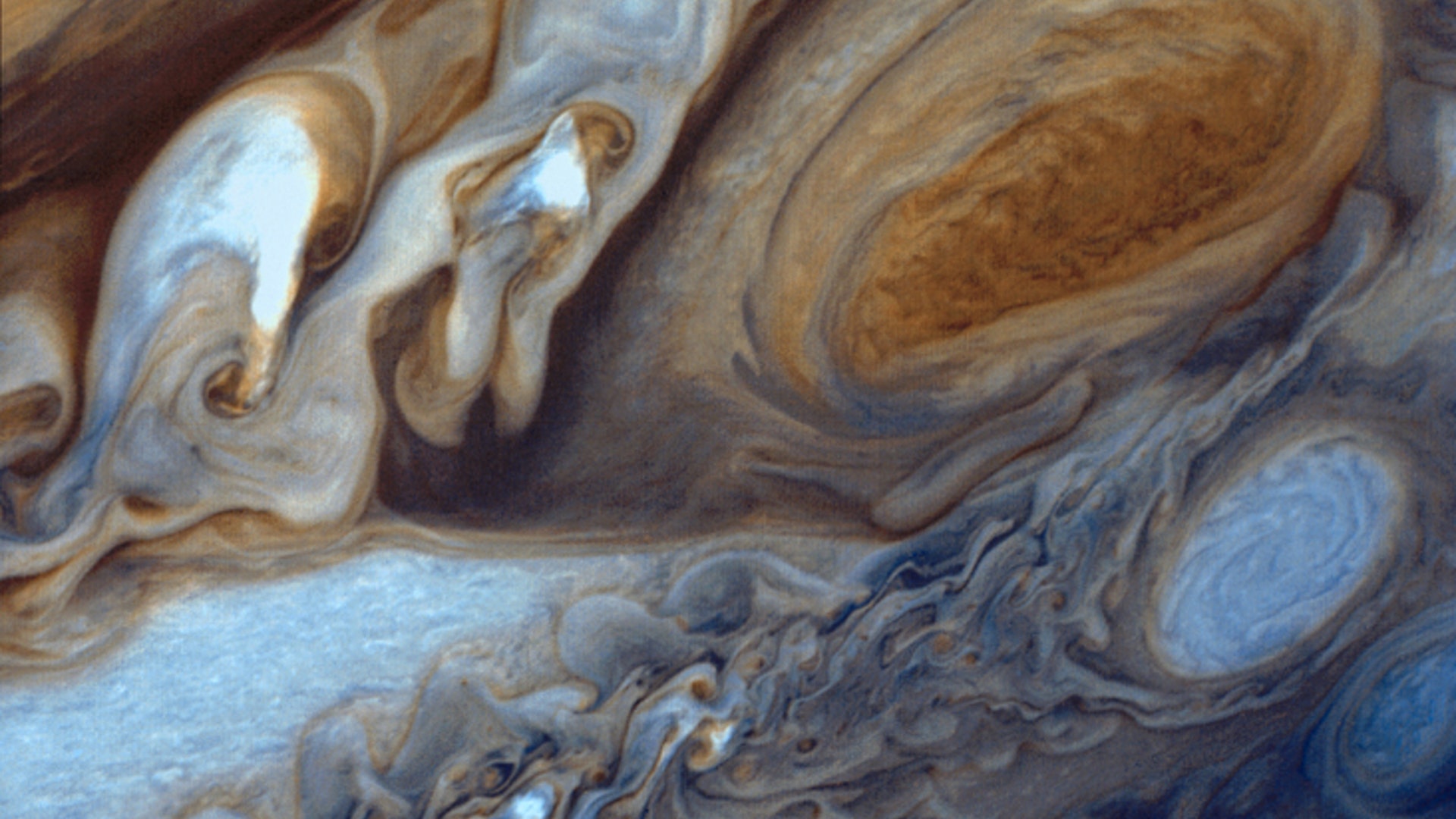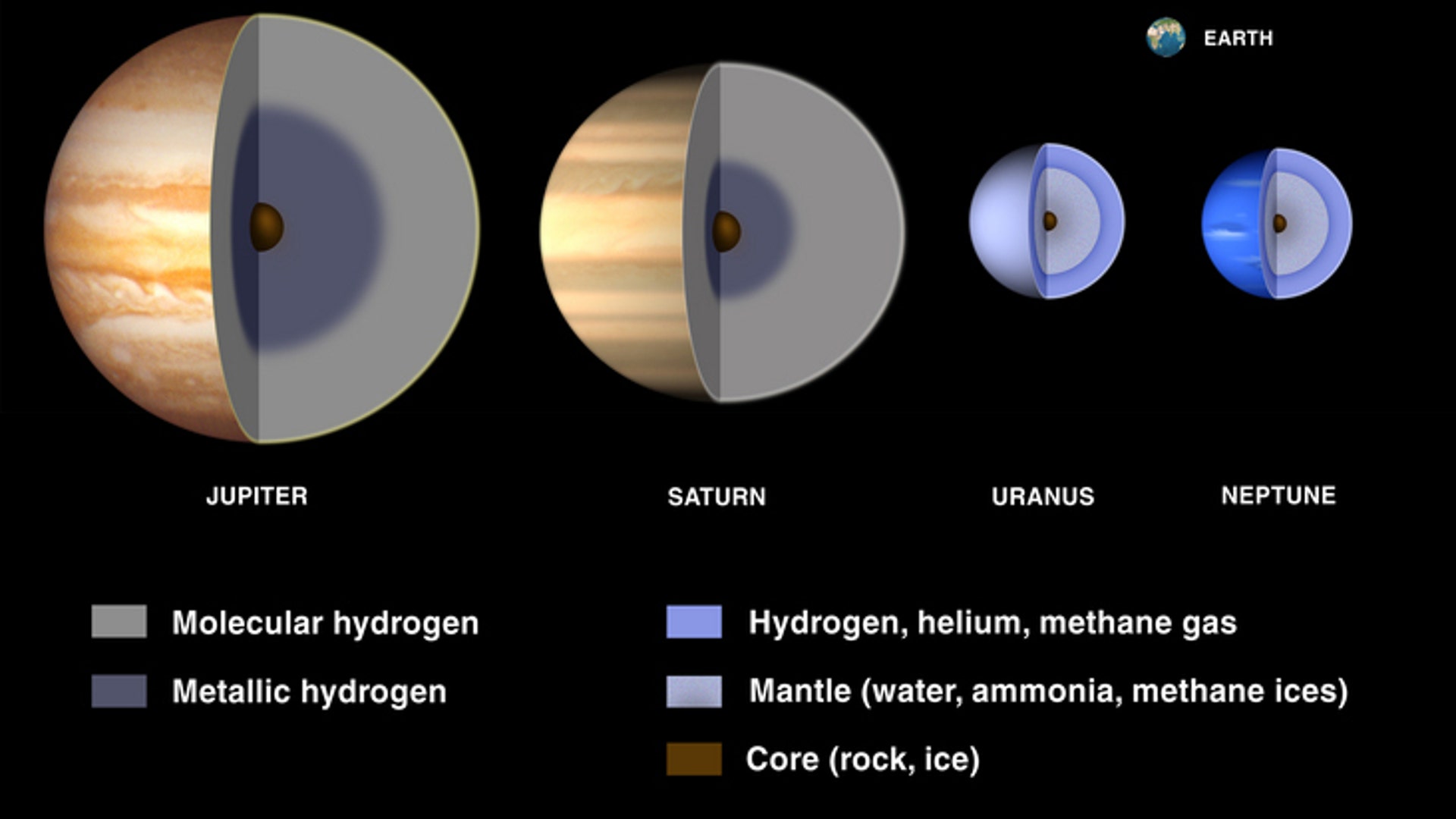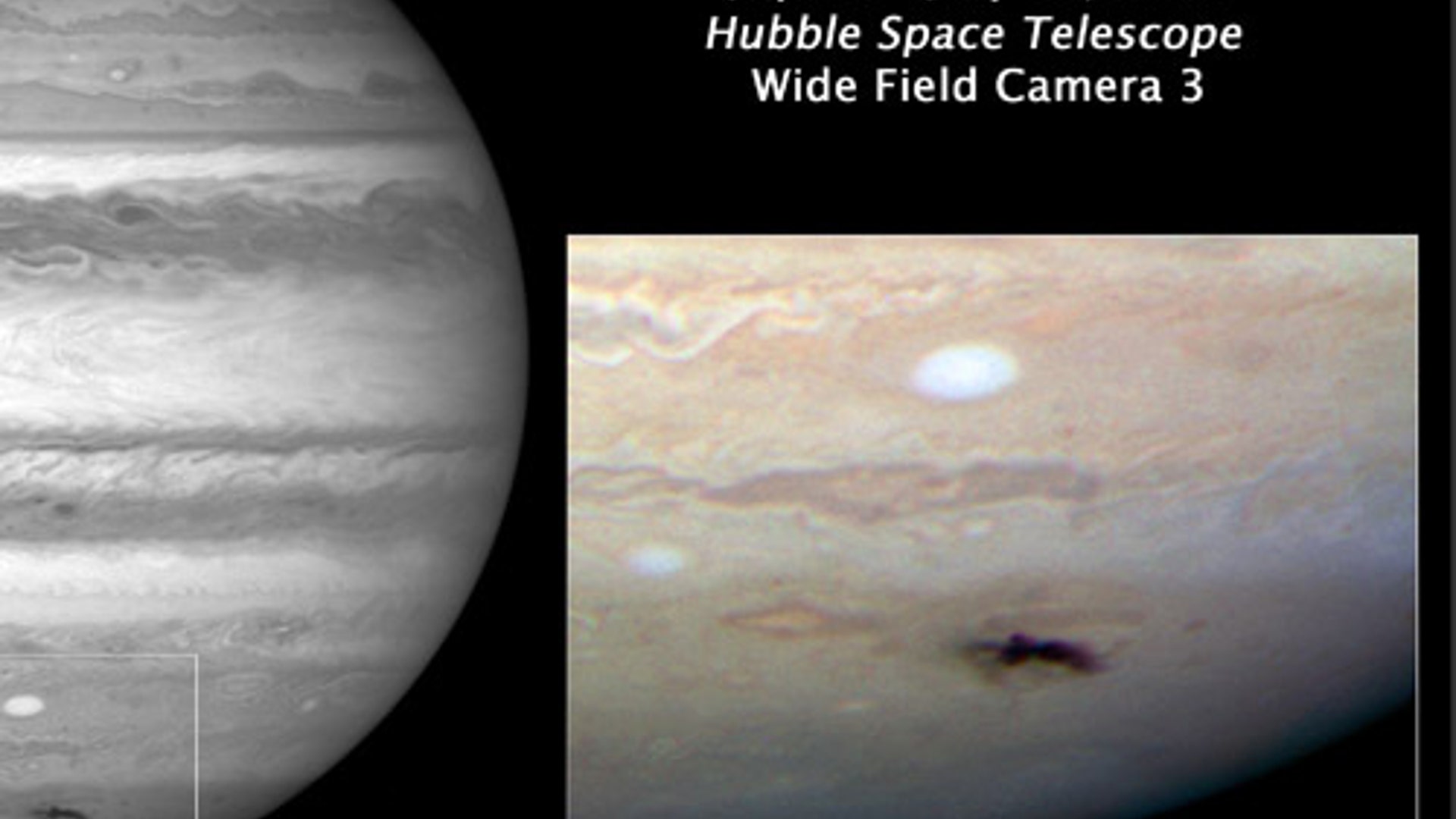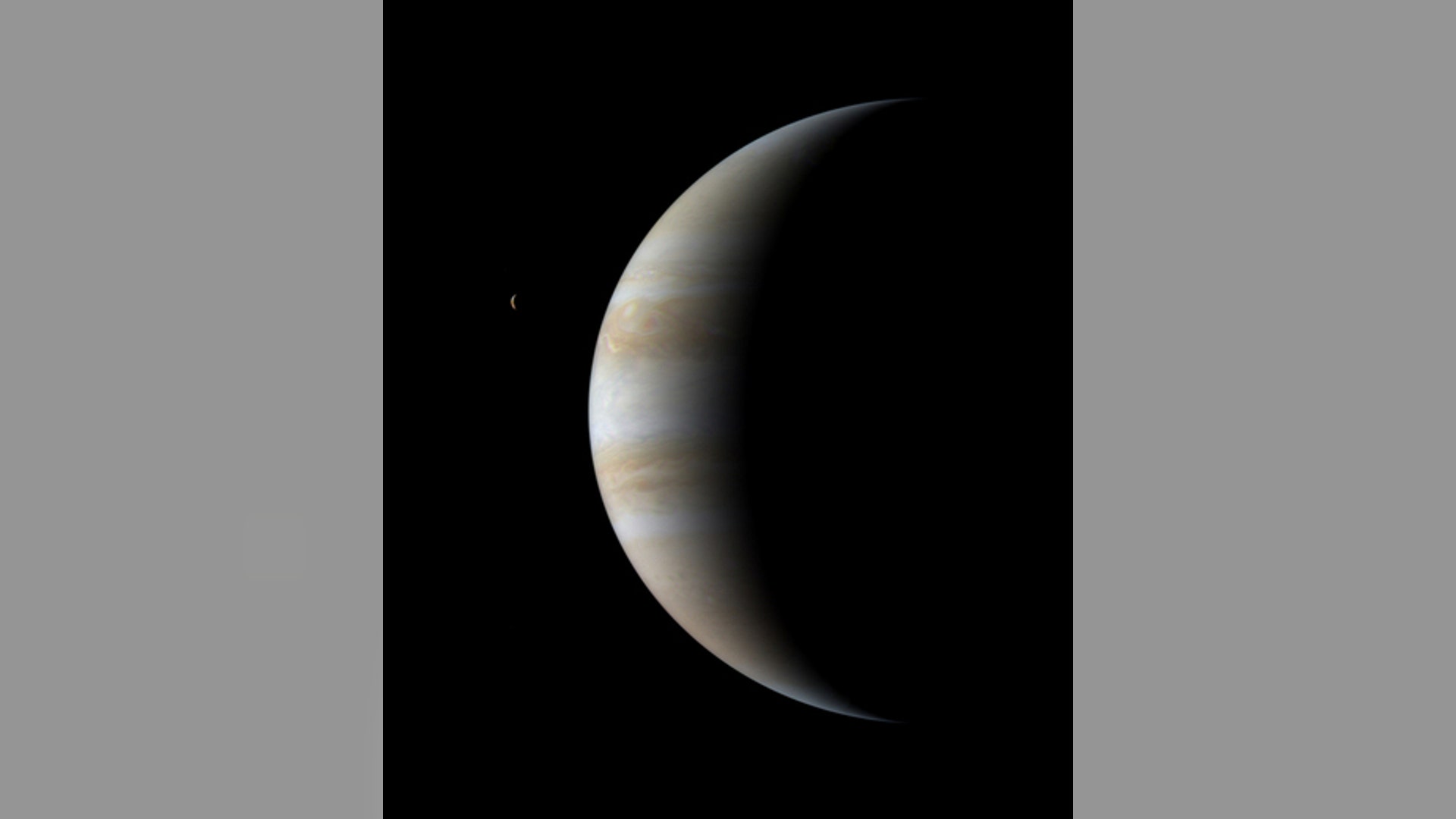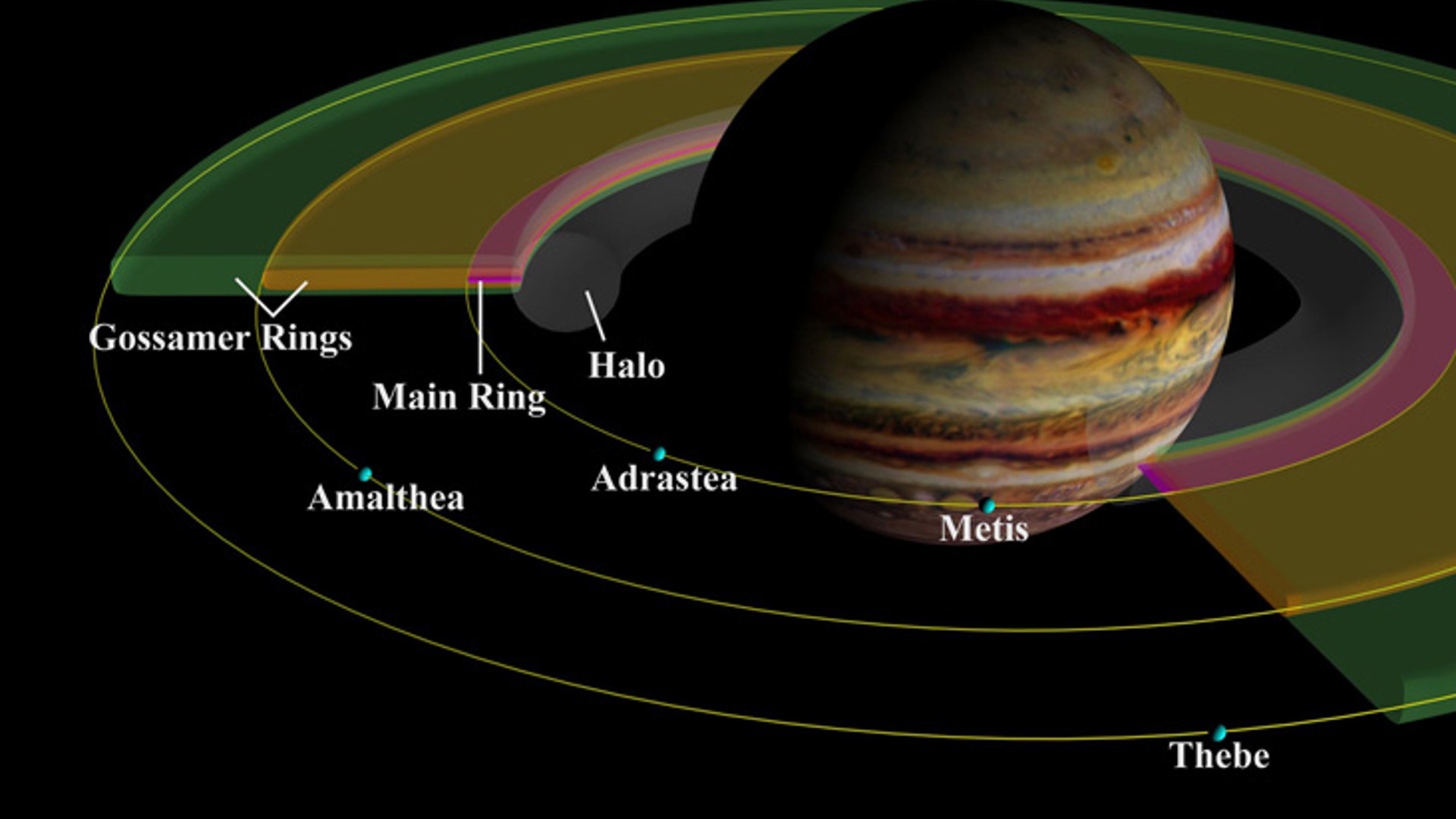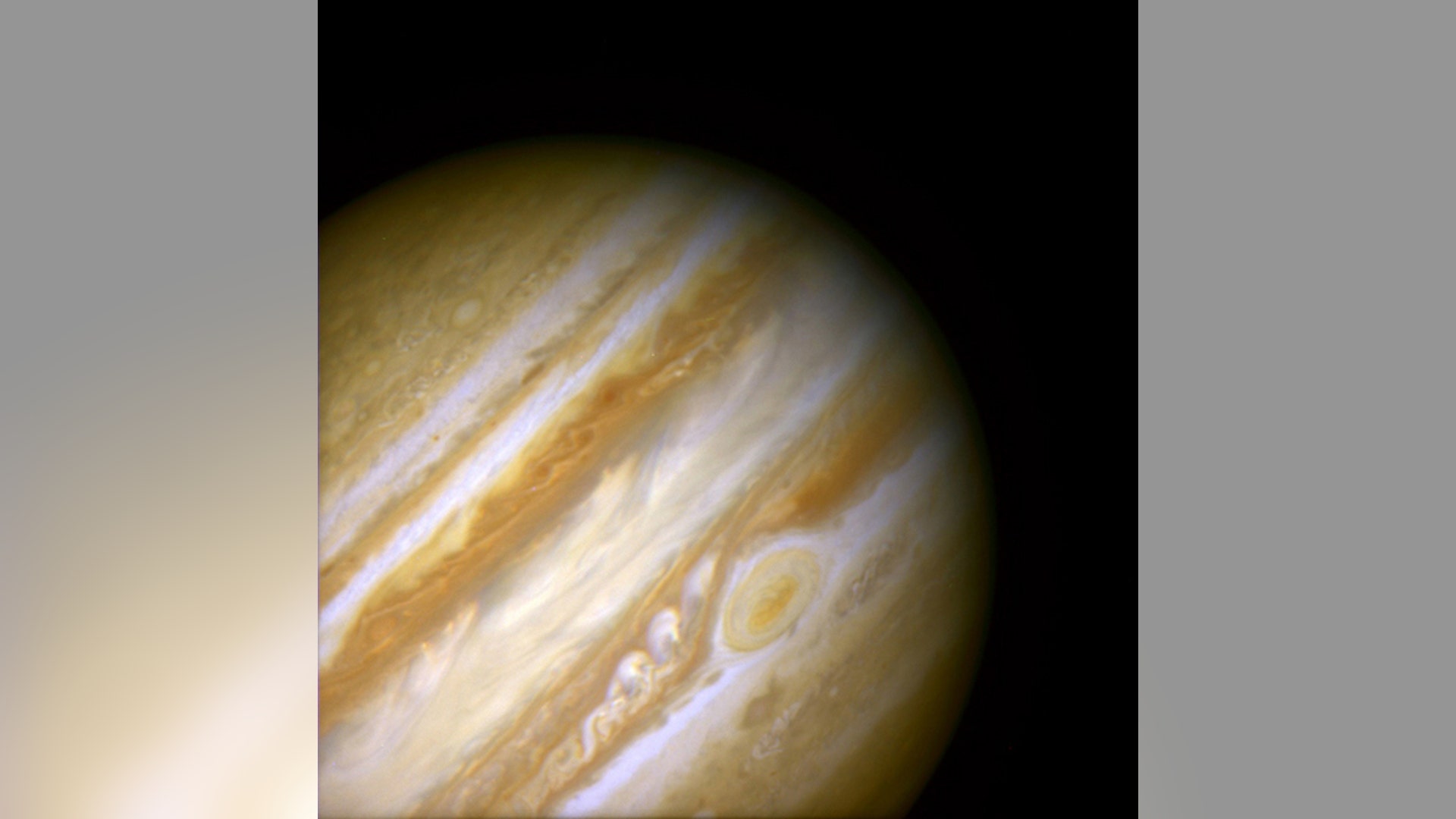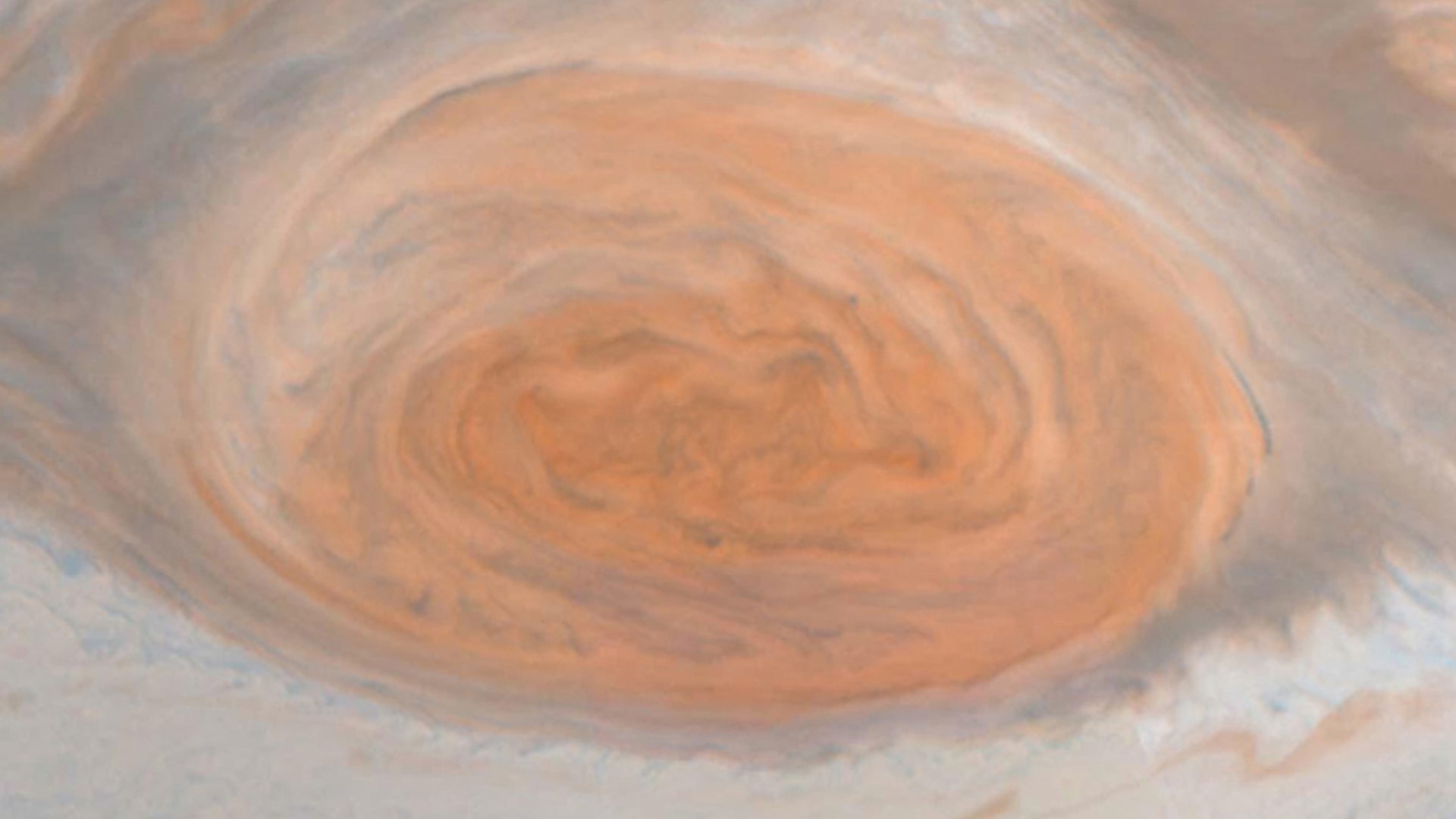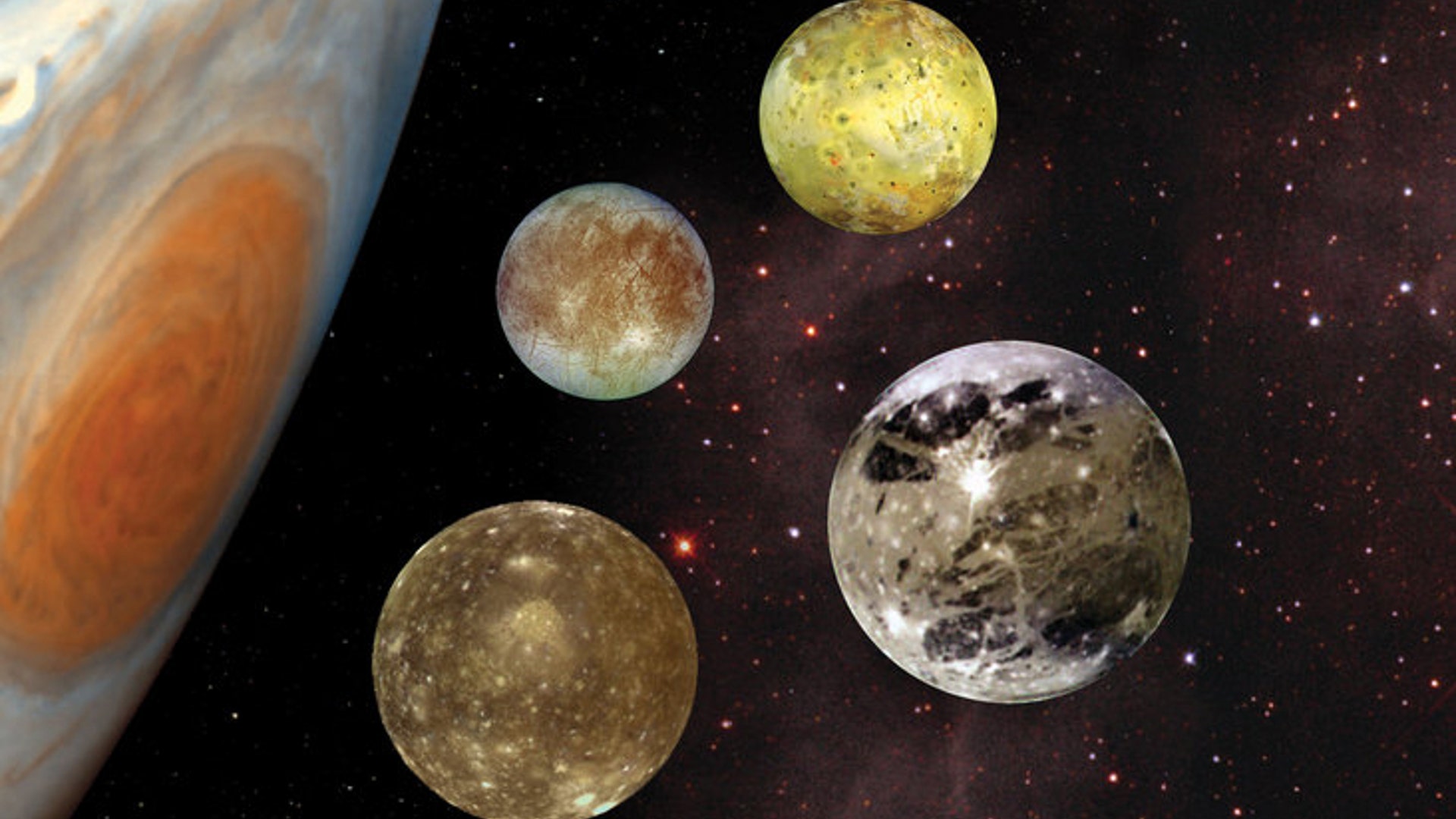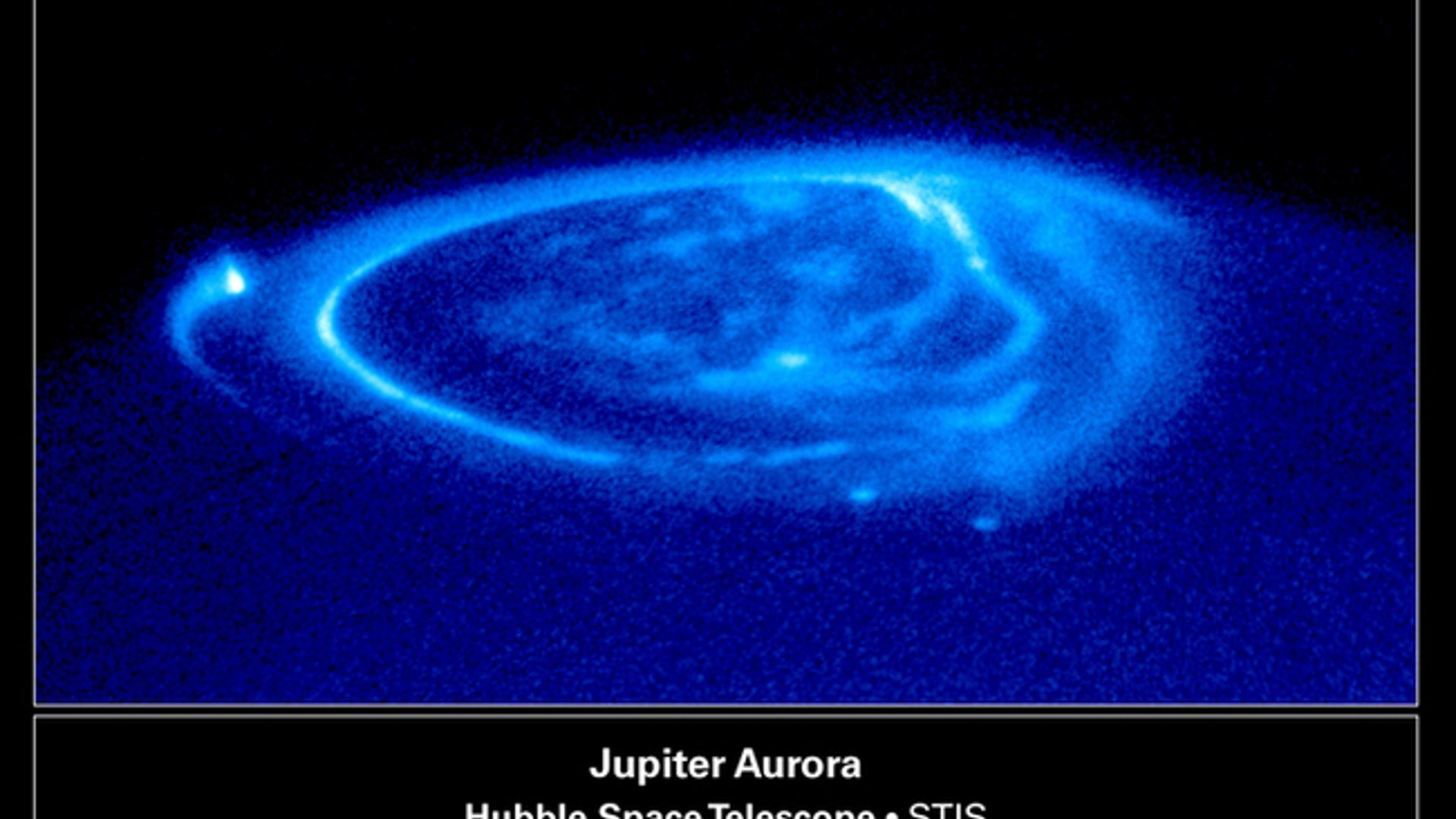Move Back
ADVERTISEMENT
Skip- Published19 Images
Next stop, Jupiter?
Known for its "Large Red Spot," our solar system's largest planet has been visited by numerous spacecraft, including Pioneer, Voyager and Cassini, which have helped snapped some stunning photos. With Curiosity roaming on Mars, could Jupiter be next?
![chandra_sees_jupiter]()
![jupiter_lo]() This photograph of the southern hemisphere of Jupiter was obtained by Voyager 2 on 25 June 1979, at a distance of 12 million km (8 million miles). Seen in front of the turbulent clouds of the planet is Io, the innermost of the large Galilean satellites of Jupiter. Io, which is about the size of our own Moon, is the most volcanically active planetary body known in the solar system, with continuous eruptions much larger than any that take place on the Earth.read moreNASA/JPLShare
This photograph of the southern hemisphere of Jupiter was obtained by Voyager 2 on 25 June 1979, at a distance of 12 million km (8 million miles). Seen in front of the turbulent clouds of the planet is Io, the innermost of the large Galilean satellites of Jupiter. Io, which is about the size of our own Moon, is the most volcanically active planetary body known in the solar system, with continuous eruptions much larger than any that take place on the Earth.read moreNASA/JPLShare![jupiter_montage]()
![jupiter_plane]() ebris blasted off the satellite Amalthea in high-speed collisions with interplanetary meteoroids will start with slightly inclined orbits like that of Amalthea (yellow lines), forming a slender tube around the satellite trajectory. These orbital paths are not, however, stationary in space but instead wobble about Jupiter's equator like a giant hula-hoop, keeping the same tilt off the equator but continually changing their orientations at rates that differ slightly depending on orbital size and shape. (Two orbits are shown at top.)read moreJim Houghton, Galileo Imaging Team, NASAShare
ebris blasted off the satellite Amalthea in high-speed collisions with interplanetary meteoroids will start with slightly inclined orbits like that of Amalthea (yellow lines), forming a slender tube around the satellite trajectory. These orbital paths are not, however, stationary in space but instead wobble about Jupiter's equator like a giant hula-hoop, keeping the same tilt off the equator but continually changing their orientations at rates that differ slightly depending on orbital size and shape. (Two orbits are shown at top.)read moreJim Houghton, Galileo Imaging Team, NASAShare![jupiter_triple_eclipse]() At first glance, Jupiter looks like it has a mild case of the measles. Five spots -- one colored white, one blue, and three black are scattered across the upper half of the planet. Closer inspection by NASA's Hubble Space Telescope reveals that these spots are actually a rare alignment of three of Jupiter's largest moons -- Io, Ganymede, and Callisto -- across the planet's face. In this image, the telltale signatures of this alignment are the shadows [the three black circles] cast by the moons.read moreNASA, ESA, and E. Karkoschka (University of Arizona)Share
At first glance, Jupiter looks like it has a mild case of the measles. Five spots -- one colored white, one blue, and three black are scattered across the upper half of the planet. Closer inspection by NASA's Hubble Space Telescope reveals that these spots are actually a rare alignment of three of Jupiter's largest moons -- Io, Ganymede, and Callisto -- across the planet's face. In this image, the telltale signatures of this alignment are the shadows [the three black circles] cast by the moons.read moreNASA, ESA, and E. Karkoschka (University of Arizona)Share![jupiter_relative_moons]()
![storms_jupiter]() This Voyager 2 image shows the region of Jupiter extending from the equator to the southern polar latitudes in the neighborhood of the Great Red Spot. A white oval, different from the one observed in a similar position at the time of the Voyager 1 encounter, is situated south of the Great Red Spot.read moreNASAShare
This Voyager 2 image shows the region of Jupiter extending from the equator to the southern polar latitudes in the neighborhood of the Great Red Spot. A white oval, different from the one observed in a similar position at the time of the Voyager 1 encounter, is situated south of the Great Red Spot.read moreNASAShare![jupiter_full]()
![jupiter_swirls]()
![comets_jupiter]()
![jupiter_gas]() Jupiter's composition is mainly hydrogen and helium. In contrast to planetary bodies covered with a hard surface crust (the Earth, for example), the jovian surface is gaseous-liquid, rendering the boundary between the atmosphere and the planet itself almost indistinguishable. Below the roughly 1000-kilometer-thick atmosphere, a layer of liquid hydrogen extends to a depth of 20,000 kilometers. Even deeper, it is believed that there is a layer of liquid metallic hydrogen at a pressure of 3 million bars. The planet core is believed to comprise iron-nickel alloy, rock, etc., at a temperature estimated to exceed 20,000C.read moreLunar and Planetary InstituteShare
Jupiter's composition is mainly hydrogen and helium. In contrast to planetary bodies covered with a hard surface crust (the Earth, for example), the jovian surface is gaseous-liquid, rendering the boundary between the atmosphere and the planet itself almost indistinguishable. Below the roughly 1000-kilometer-thick atmosphere, a layer of liquid hydrogen extends to a depth of 20,000 kilometers. Even deeper, it is believed that there is a layer of liquid metallic hydrogen at a pressure of 3 million bars. The planet core is believed to comprise iron-nickel alloy, rock, etc., at a temperature estimated to exceed 20,000C.read moreLunar and Planetary InstituteShare![jupiter_collisions]() This Hubble picture, taken on 23 July 2009, by the Wide Field Camera 3, is the sharpest visible-light picture taken of the atmospheric debris from a comet or asteroid that collided with Jupiter on 19 July 2009. This was Hubble's first science observation following its repair and upgrade in May of that year. The size of the impactor is estimated to be as large as several football fields.read moreNASA, ESA, H. Hammel (SSI) and the Jupiter Impact TeamShare
This Hubble picture, taken on 23 July 2009, by the Wide Field Camera 3, is the sharpest visible-light picture taken of the atmospheric debris from a comet or asteroid that collided with Jupiter on 19 July 2009. This was Hubble's first science observation following its repair and upgrade in May of that year. The size of the impactor is estimated to be as large as several football fields.read moreNASA, ESA, H. Hammel (SSI) and the Jupiter Impact TeamShare![jupiter_cassini]()
![jupiter_rings]()
![jupiter_ancient_storm]() When 17th-century astronomers first turned their telescopes to Jupiter, they noted a conspicuous reddish spot on the giant planet. This Great Red Spot is still present in Jupiter's atmosphere, more than 300 years later. It is now known that it is a vast storm, spinning like a cyclone.read moreNASAShare
When 17th-century astronomers first turned their telescopes to Jupiter, they noted a conspicuous reddish spot on the giant planet. This Great Red Spot is still present in Jupiter's atmosphere, more than 300 years later. It is now known that it is a vast storm, spinning like a cyclone.read moreNASAShare![jupiter_red_spot]()
![jupiter_moons]()
![jupiter_aurora]() In this Hubble telescope picture, a curtain of glowing gas is wrapped around Jupiter's north pole like a lasso. This curtain of light, called an aurora, is produced when high-energy electrons race along the planet's magnetic field and into the upper atmosphere where they excite atmospheric gases, causing them to glow.read moreJohn Clarke (University of Michigan) and NASAShare
In this Hubble telescope picture, a curtain of glowing gas is wrapped around Jupiter's north pole like a lasso. This curtain of light, called an aurora, is produced when high-energy electrons race along the planet's magnetic field and into the upper atmosphere where they excite atmospheric gases, causing them to glow.read moreJohn Clarke (University of Michigan) and NASAShare![east_of_spot_jupiter]() This view of the region just to the east of the Great Red Spot is seen in greatly exaggerated color. The colors do not represent the true hues seen in the Jovian atmosphere, but have been produced by special computer processing to enhance subtle variations in both color and shading.read moreNASA/JPLShare
This view of the region just to the east of the Great Red Spot is seen in greatly exaggerated color. The colors do not represent the true hues seen in the Jovian atmosphere, but have been produced by special computer processing to enhance subtle variations in both color and shading.read moreNASA/JPLShare- Published19 Images
Next stop, Jupiter?
Known for its "Large Red Spot," our solar system's largest planet has been visited by numerous spacecraft, including Pioneer, Voyager and Cassini, which have helped snapped some stunning photos. With Curiosity roaming on Mars, could Jupiter be next?
Move Forward
- Next stop, Jupiter?



















Thumbnail View
Image 0 of 19


